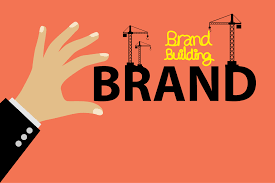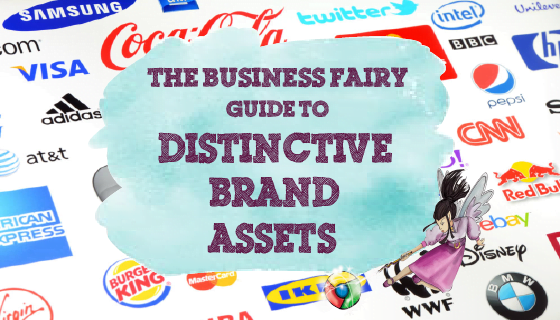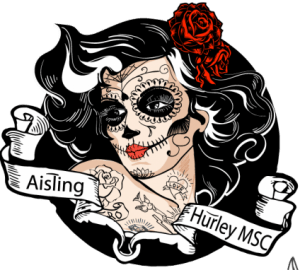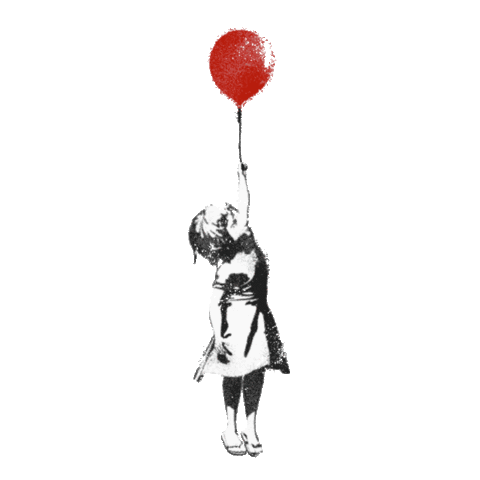Everyone who owns a business would like to think that your brand is completely unique and unlike any other, but that’s not always the case. Marketers may talk about what makes a brand unique but in reality there are very few products or services on the market that are truly one of a kind or unique. So what can you do to make your brand really stand out amongst your competitors? The answer is what we call distinctive brand assets, and they are what makes two very similar companies look completely different.
In order to benefit from our distinctive brand assets, you need to understand and identify what they are within your brand and how they make you different to others. Below, we’ve put a guide together to help you figure out what your distinctive assets are, and how to use them to make your brand stand out against the rest.

What are Distinctive Brand Assets?
Distinctiveness doesn’t have anything to do with how your product works, it’s to do with the branding of your product. Distinctiveness is the elements of the brand that make it recognisable to your customer. When unique elements are tied back to a brand, they are known as “distinctive assets.”
Distinctive assets can be anything sensory, but in the world of advertising and media we focus on visual and audio assets to identify our brand. There is a strong influence placed on visual assets in marketing and branding. For example, these include shapes, colours, faces, words, and fonts just to name a few. Each of these examples have qualities which make one brand different from another, and which can be leveraged to your brand’s advantage.
Used to measure how prevalent and unique customers think it is, distinctive assets are valuable to a brand. If a brand is more unique than another, it earns more recognition and loyalty from the consumer, resulting in a lot more profit for the brand. (Very important as part of an exit strategy).
If you want to maintain and protect your brand’s distinctiveness you need to be consistent in the use of your logos, colors, typography, mascots, tagline and advertising style, all of which are known as your brands core elements.
To explain this better we’re going to look at the brand Coca-Cola. There are plenty of cola brands across the globe but the red and white banner that Coca-Cola uses is unique to the brand, which is what makes their brand distinctive. This can again be seen with the golden unique golden arches used by McDonalds. Even though these brands have evolved over time, their distinct brand assets have remained consistent, resulting in the consumer remaining loyal to what they know, through the changes.

Another really strong example of distinctive brand assets is the Nike ‘Just Do It’ slogan and their infamous swoosh logo. Their logo is so distinct as a brand asset that it can now exist on it’s own, and people can still identify the brand even if they have never owned a Nike product.

So when should really consider your distinctive assets and make sure that they are in place?
The first situation that you should make sure that your distinctive assets stay in place is in place is if you are thinking about changing or updating brand’s identity and need guidance on what to keep or if you are considering reviving an old brand element, but aren’t sure if it’s still relevant. Secondly, if you want to improve your branding/brand linkage scores or if you are planning new advertising and need to assess the potential of introducing new brand elements.
If any of the above apply to you, it’s probably time for you to assess your distinctive brand assets and make sure that they remain the same throughout any changes that take place.
How to Identify Your Distinctive Brand Assets
Identifying distinctive assets will help you to make sure that you’re not using an element that is associated with your competitor. This is important because you don’t want to use an element that is iconic to another brand. If you do this it’s similar to giving your competitor free advertising, as consumers will associate the branding with them.
One of the challenges brands face is identifying which assets are distinct when there is so much content being created for multiple channels and audiences. To help you identify your distinctive brand assets, you need to think of the key criteria is prevalence and uniqueness. It is possible to control a brand’s prevalence; it just comes down to consistent use of distinctive assets in copy and packaging. However, uniqueness is more difficult to control and measure because it os largely influenced by to what your competitors branding is – consumers link the asset to the brand so it’s important that yours is different and stands out.
Protecting and Managing Your Distinctive Brand Assets
It takes time and consistency for consumers to make the link between the assets and the brand. Distinctive brand assets do not just happen overnight. It’s vital that your business protects you distinctive assets once you’ve found them.
- Rely on what your consumers say about your brand’s uniqueness –these are the people who are going to be buying your products, and you want to make sure that they know your brand apart from the rest.
- Use your distinctive assets in every marketing campaign – whether its a facebook ad, a blog, or on the television, don’t change the elements. You want people to recouping your brand the. Next time they see it.
- Use the same distinctive assets in advertising and packaging. Whether its a logo, sticker, or type, make sure that it’s consistent, so that the next time the consumer wants to purchase your product, they can remember who you are and don’t confuse you with a competitor.
- Always make sure your competitors aren’t using a similar brand element – continue to stay informed, just because there wasn’t someone who had similar elements when you first started identifying your assets doesn’t mean that someone won’t pop up in a years time with a similar logo or type to yours.
Remember: if change is the only constant thing about your branding, you might as well be ten different companies because the consumer will not be able to recognise you as a brand. If valuable distinctive assets are lost, you might as well just be throwing away years of investment and consumer recognition. When managing assets is streamlined, the team can finally focus on the most important goal – building a strong brand.




